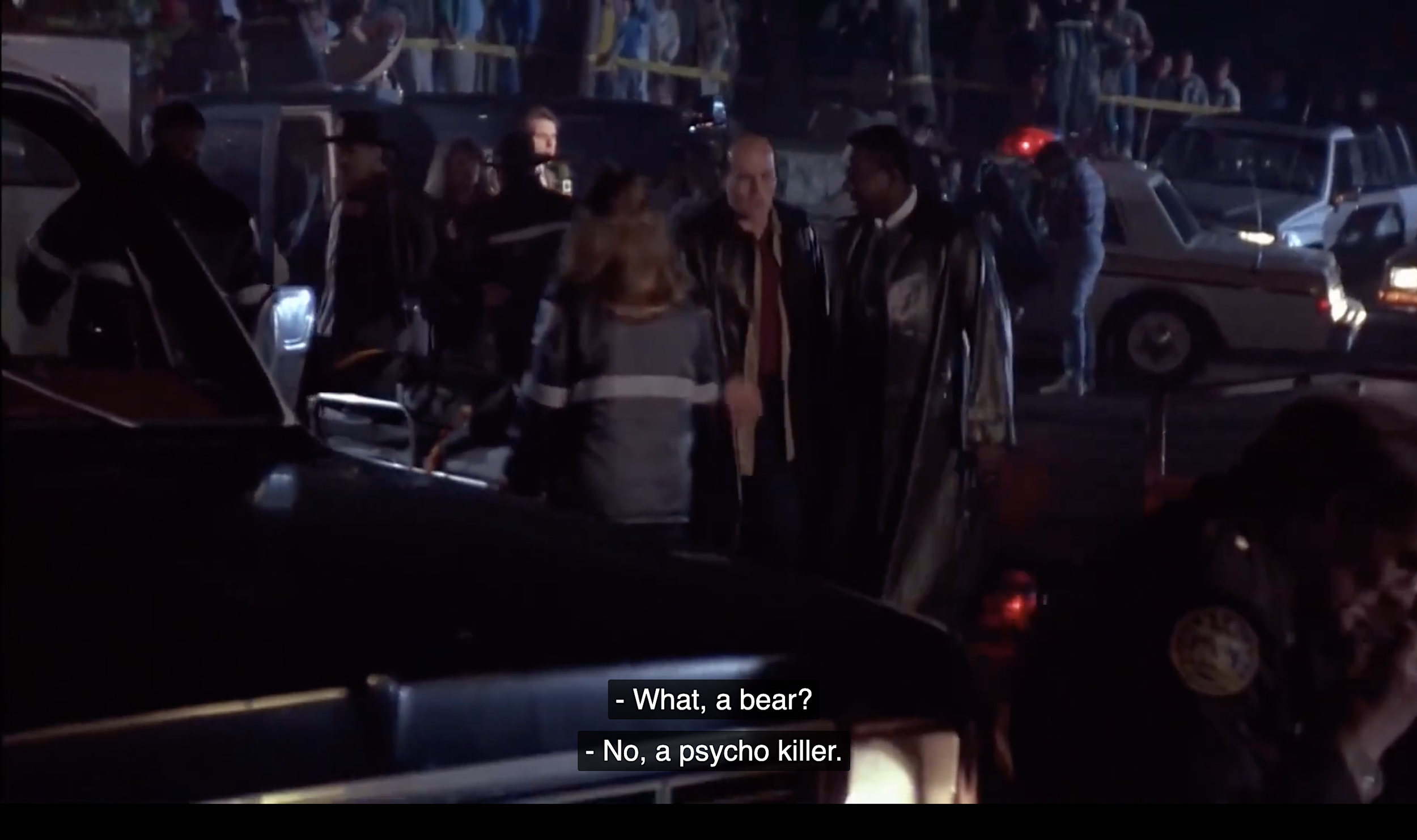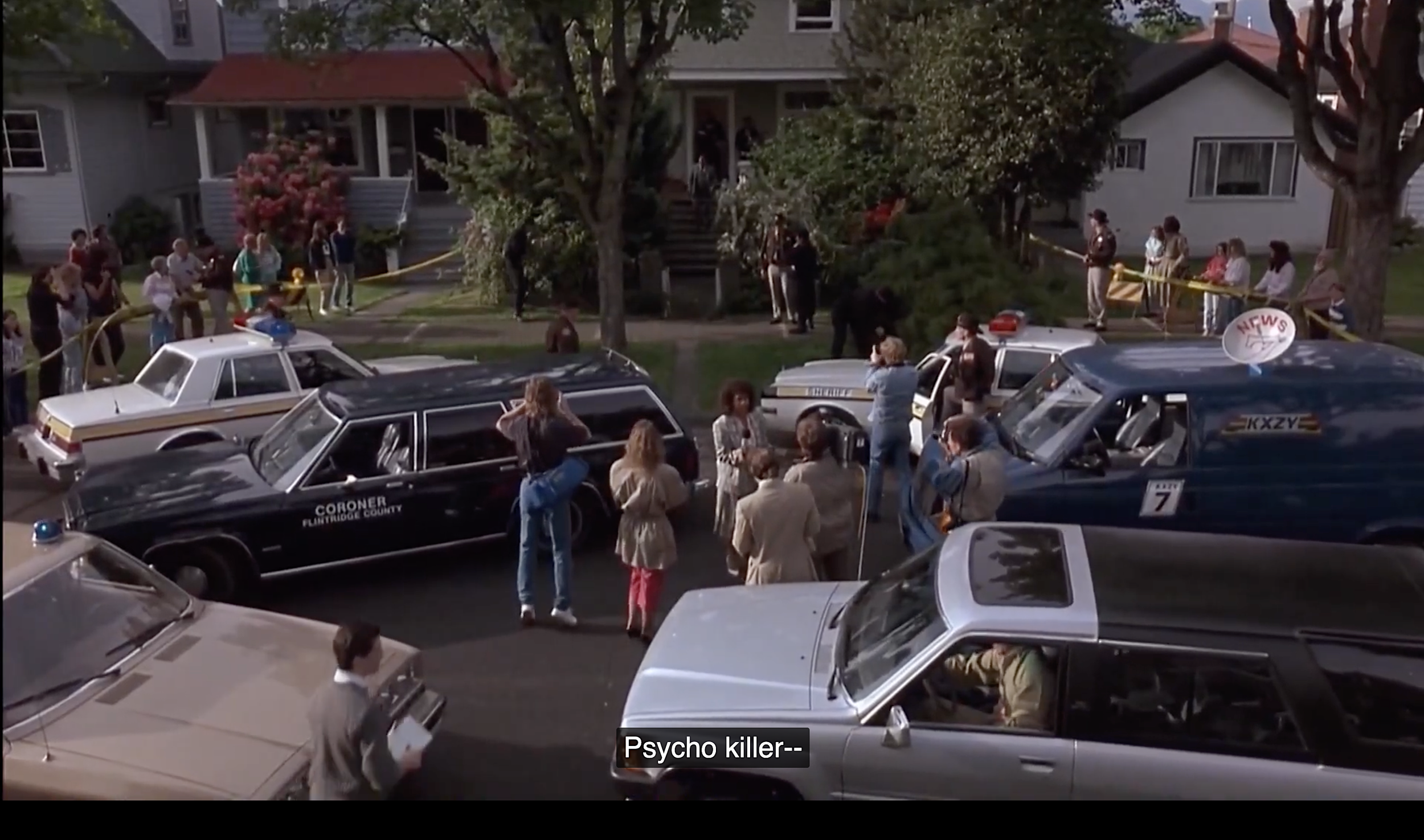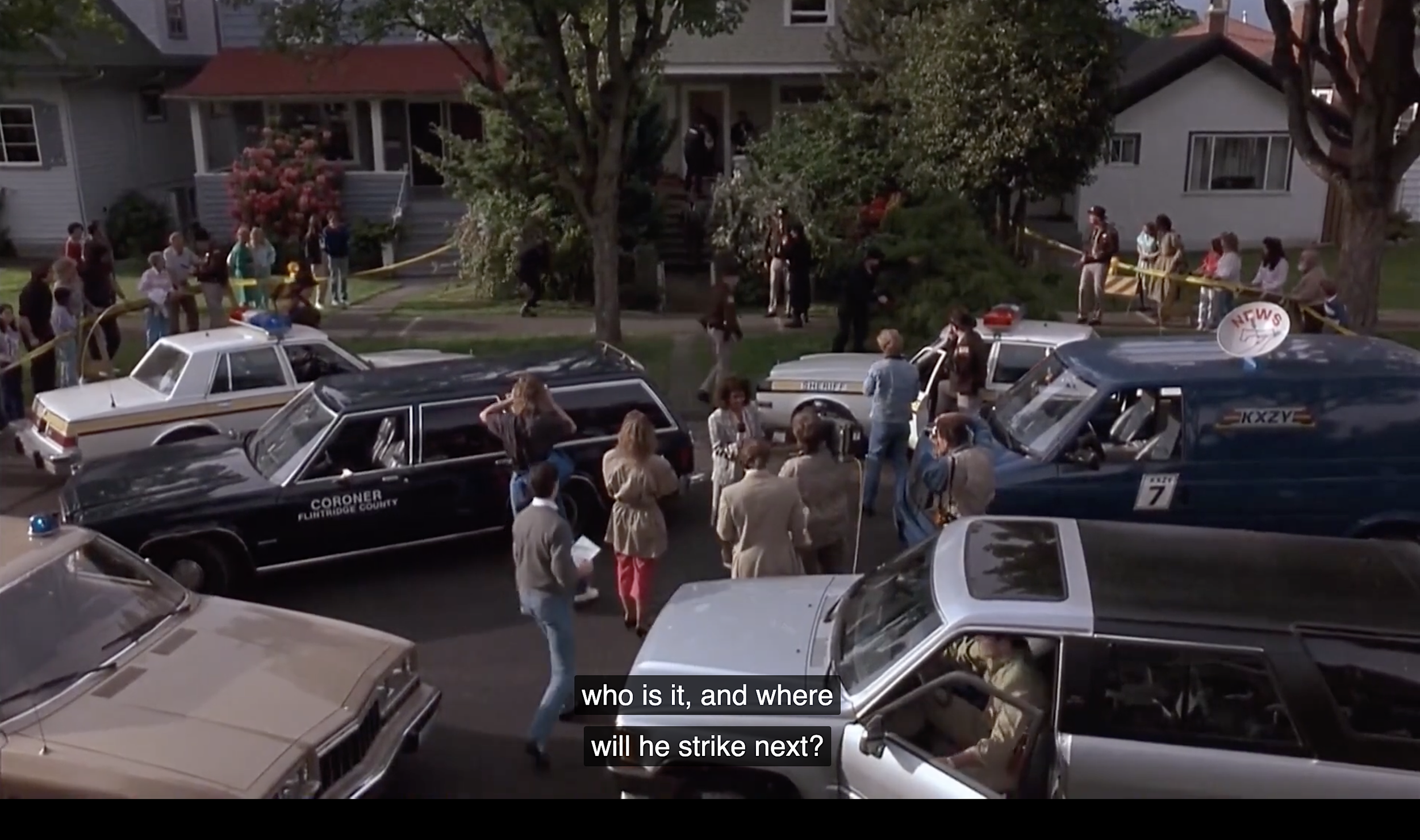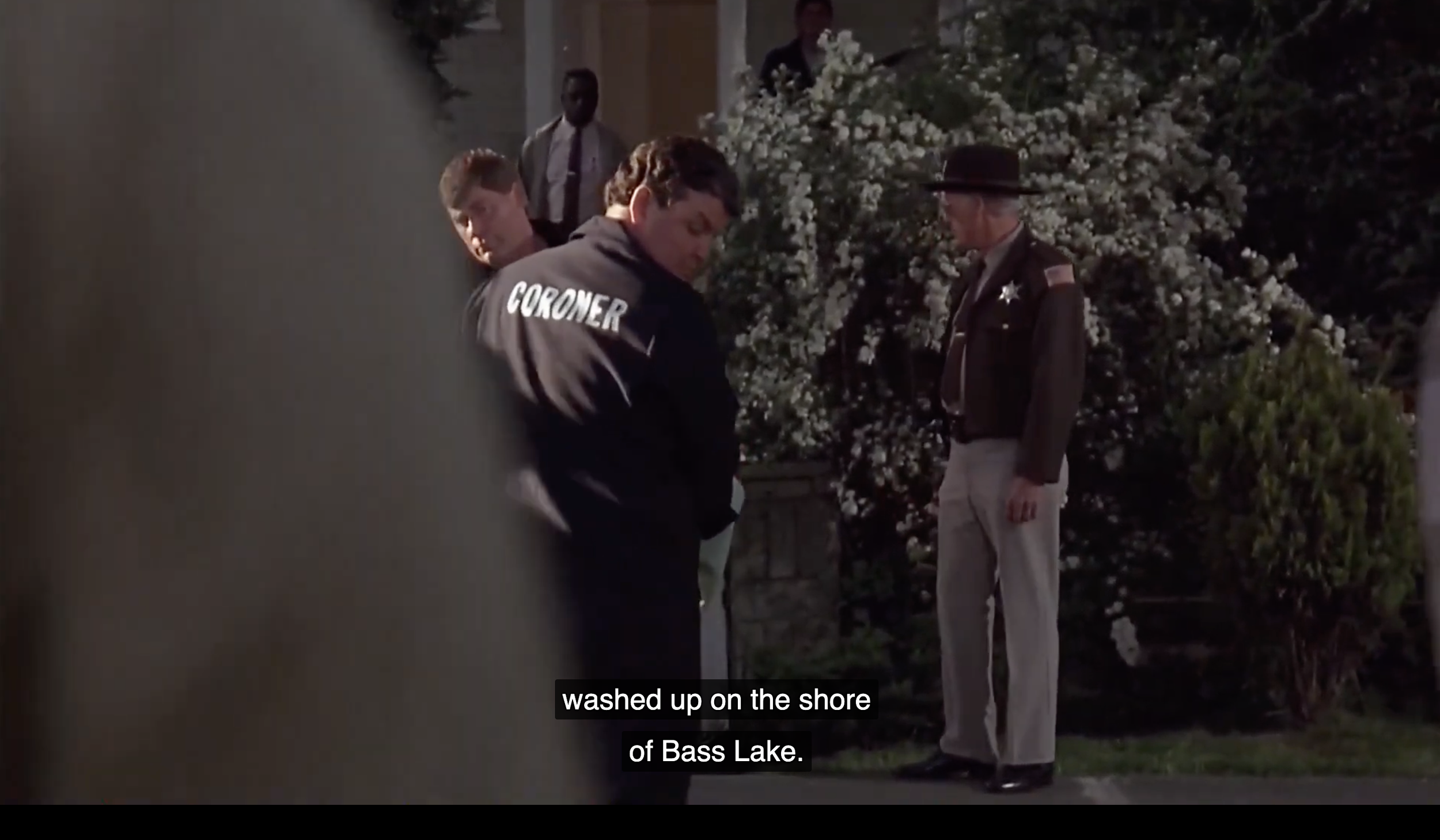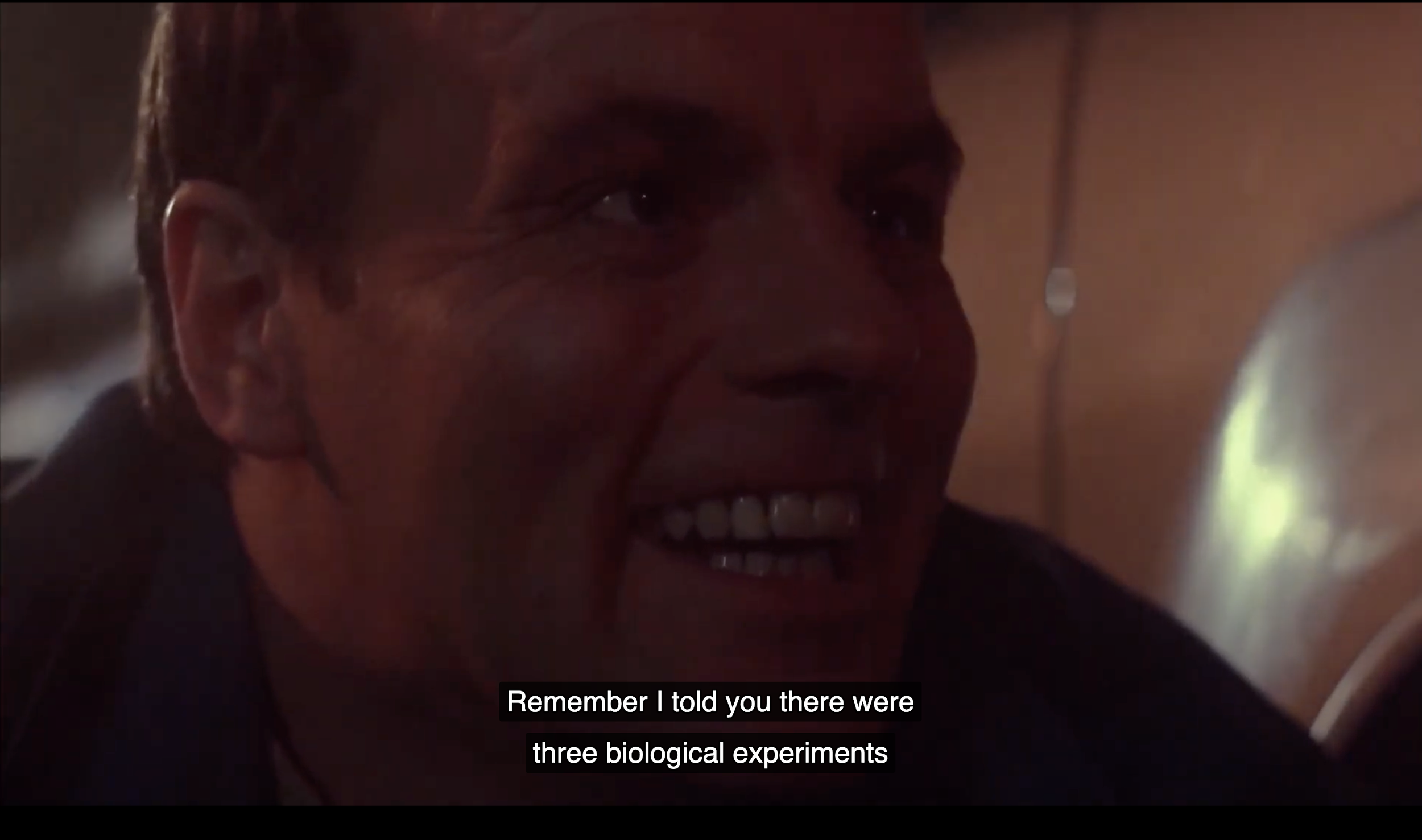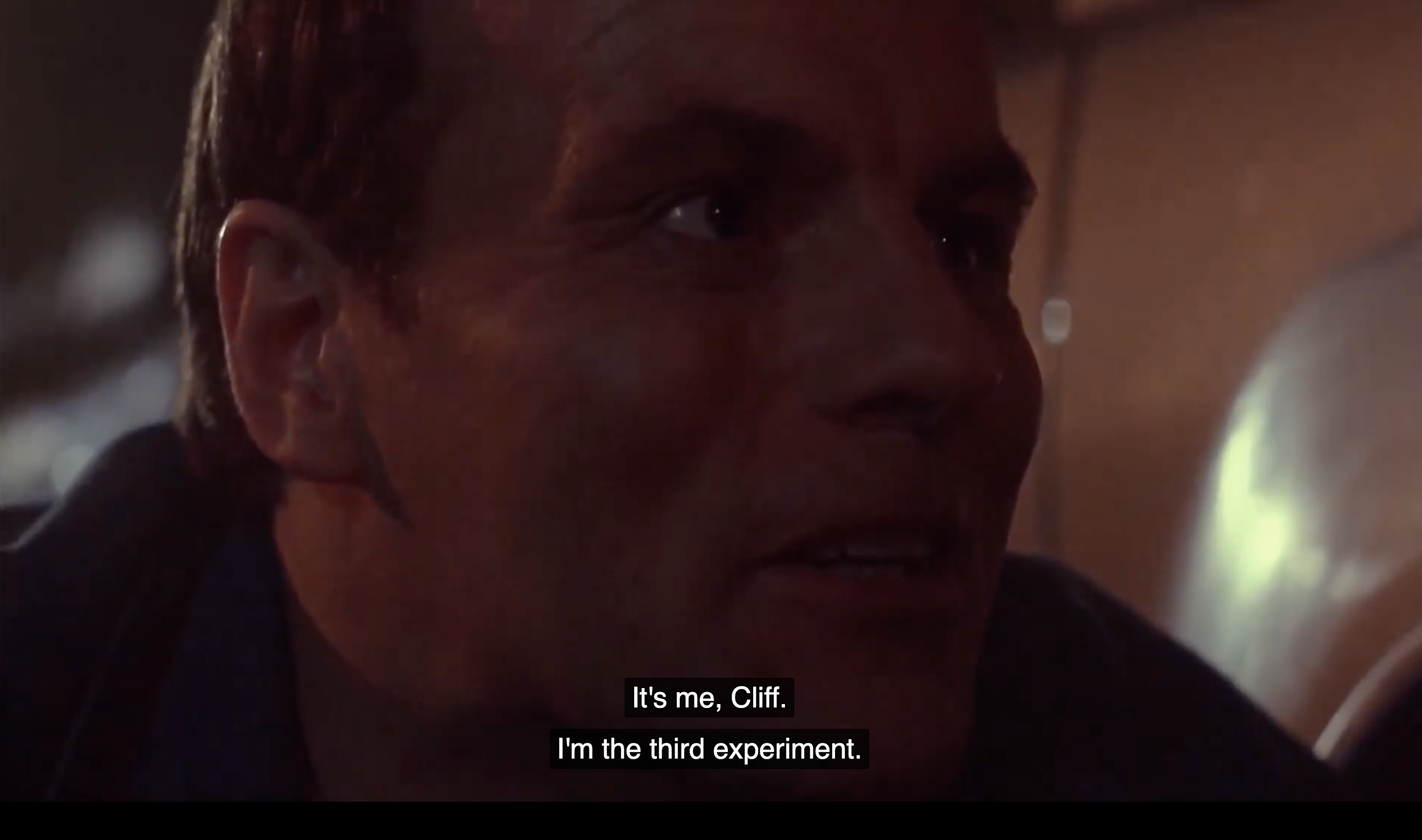10:14:24
The series of screenshots from the 1988 movie, Watchers, is admittance of narrative seeding and predictive programming for government cover ups. The so-called psycho killer/serial killer of the 1970s and 80s was not only a socially engineered narrative, he was a CIA/FBI creation. The CIA created him, the FBI constructed his criminal profile (victim type, motive, killing pattern, etc). The “lone” serial killer has been upgraded to the mass shooter.
As I write in Time Tells vol 2, the FBI’s introduction of criminal profiling and pattern study in the late 1970s was conveniently also the beginning of the technological era, a transportational boom the serial killer supposedly used to his advantage, committing murders across state lines. By having serial killers supply the raw data of their murders, the FBI “built a composite of the mass killer and his victims,” as newscaster Tom Brokaw reported on the nightly news in 1984: “The bureau today said a new computer center is being set up to analyze that data. Agents hope that this computer will spot those subtle patterns that they have missed in the past.” The establishment of a national center of analysis of violent crime, which Mindhunter (2018) creator, Joe Penhall, refers to as a “death museum,” allowed male FBI agents to figure out “who kills and why,” and to “look for patterns in the methods of murders”
As I’ve mentioned many times on this blog, Dave McGowan’s Programmed to Kill: The Politics of Serial Murder, deconstructs the flimsiness and apocrypha of the FBI’s profile, offering extensive links between the torrent of “serial killers” beginning in the 1960s to US military involvement, and specifically to the Phoenix program (Henry Lee Lucas had especially strong links, and his death sentence was mysteriously commuted by then-governor of Texas, George W. Bush). But, as Jasun Horsley has pointed out, “none of this is referenced in movies like Spy Game or Zodiac. Or in Fincher’s Netflix series about serial killer profiling, Mindhunter.” The first time I heard the term Phoenix Program uttered in a popular movie was Lethal Weapon, which I posted about a year and a half ago, when I was rewatching the entire Weapon franchise. It blew my mind to hear the loveable and unhinged Martin Riggs described as a traumatized ex-Mkultra assassin. It’s love and the Murtaugh family that heals and restores him, brings him back to sanity. You would expect Taxi Driver to mention this obvious context for Travis Bickle, but no, it never does. Instead Richard Donner (the guy who made Superman and Goonies) does it in Lethal Weapon a decade later.
In the 1980s, Hollywood movies like E.T., Halloween 3, Hanky Panky, and Watchers, were constantly exposing our shadow government (and what it did to children. Netflix’s Stranger Things also shows us this, and is rumored to be based on the Montauk Project, the kind of covert government experiments Brian De Palma was always making movies about in the 70s and 80s, most notably with The Fury. Critics and fans chose to celebrate Stranger Things’ nostalgic element and 80s cinematic references instead. For those that still think mind control projects, MKUltra, time travel, inter-dimensional travel, and remote viewing are “conspiracies,” the CIA’s de-classified 1988 document assessing and analyzing the Gateway Process proves it is most certainly not), their secret experiments and covert programs.
And then that stopped and we forgot.
The government and law enforcement returned to being a hero in the late1990s and early 2000s. The three letter agencies were celebrated and given media makeovers. Actors, like Kiefer Sutherland (24) and Claire Danes (Homeland) played a big part in this makeover, as did Ben Affleck’s Argo, where he openly admitted, both in the film and in press interviews, that Hollywood and the CIA are one and the same. I’ve written about this quite a lot on this blog. Former CIA and Chief “Master of Disguise,” Jonna Mendez, wife of the CIA officer, Antonia J. Mendez, head of Disguise Tech, and on whom Argo is based, has also admitted this. Yet no one seems to have a problem with it. Jonna Mendez describes her work at the CIA as a cloning mission: “Those human masks were the beginning of a whole new generation of work that we did at the CIA. We could take your face and put it on someone else. We discovered we could make a twin. We could make another you. There could be two of you. We could actually make five or six of you.”
Jonna Mendez
Face/Off, 1996
Hideaway, 1995
If Hollywood and the CIA are intimately connected, if masks and clones are involved, if people can be replicated, dating back to at least the 1980s, when Jonna Mendez was working for the CIA, are we so sure that the bizarre-looking and bizarre-acting celebrities, models, and politicians, whose faces and bodies keep changing before our eyes, are even real anymore? I’m not. They certainly don’t act like it.
Watchers, 1988









